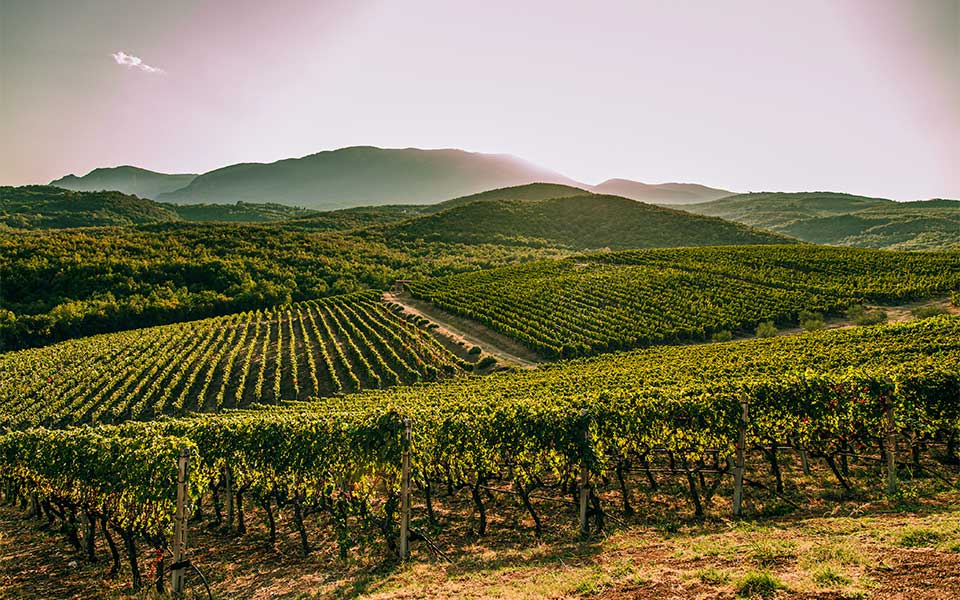Xinomavro, the distinct grape variety of northern Greece, was almost certainly born in the cradle of the Macedonian kings. The writings of Herodotus, and in particular the myth of King Midas, who captured the wise satyr Silenus by offering him wine that flowed from a fountain, testify to the prehistoric presence of vineyards and wine production in the Mount Vermio area. Later, an 18th-century document refers to a “sour and astringent wine,” a description closely resembling today’s Xinomavro. There are also historical references to the production of select Naoussa wines during the Ottoman era (1430-1912).
According to Stavroula Kourakou-Dragona, who’s known as the mother of Greek oenology, a significant portion of the wine produced in the Ottoman Empire originated from Naoussa. Esprit Marie Cousinéry, a French consul in Thessaloniki and Smyrna, traveled around Macedonia in 1814 and in his resulting book, “Voyage dans la Macédoine,” he wrote: “We arrived in Niáousta, which was more a small town than a village. It must have been inhabited from very old times, due to its beautiful waters and its good vineyards facing south … The wine of Niáousta is for Macedonia what the wine of Burgundy is for France. It is always sold at double the price of other wines, even those from nearby regions … I can assure you that except for the wine of Tenedos, the wine of Niáousta, considered as an everyday wine, is the best in all of Turkey.”
The key characteristic of the Xinomavro variety, its high acidity, gave the wine a comparative advantage – ageability – and thus the ability to be transported without spoiling. While it may seem obvious today that a bottle from Macedonia can reach the Far East, in the 18th century this was not the case. The wines for export had some additives to preserve them; they were mainly fortified wines such as commandaria, port and vermouth. The Sephardic Jews of Thessaloniki, the country’s major commercial port, played a significant role in promoting the popularity of the wine and in its export to Alexandria in Egypt and beyond.
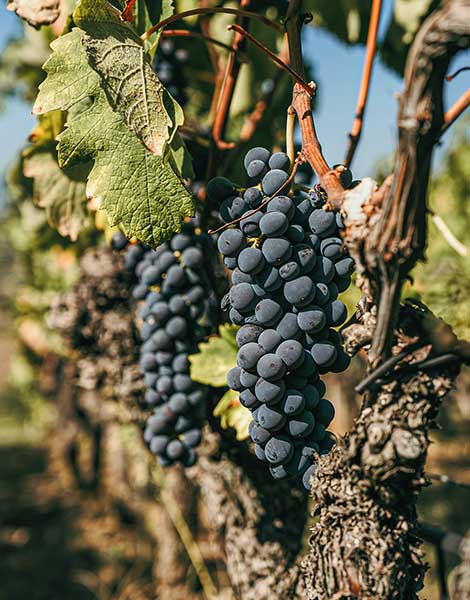
© Vicky Tsatsampa
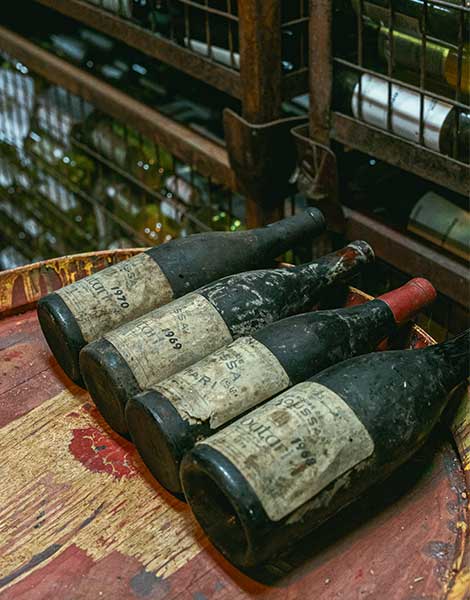
© Vicky Tsatsampa
In the early twentieth century, Naoussa was noted for its vineyards (around 2,000 hectares of them) and its silkworms. In 1906, Ioannis Boutaris built the town’s first privately owned winery, located on Zafeiraki Street. This traditional building consisted of two floors: the winery on the ground floor and a silkworm processing area on the upper floor. It was here that Greece’s first red bottled wine, “Naoussa Boutari,” was produced, opening up new markets and confirming the quality of the region’s wines. This event marked the launch of Greece’s first “appellation of origin” label 70 years before the establishment of the Protected Designation of Origin (PDO) system. For this and other reasons, the “Naoussa Boutari” label has been of tremendous importance for the entire Greek winemaking industry.
In 1909, the legendary Lanaras textile factory, which spun thread using hydroelectric power, was founded on the banks of the Arapitsa River. For the next 20 years, the area flourished productively and economically, until the 1928 phylloxera infestation devastated most of the vineyards. The tumultuous 1930s were marked by wars and political and economic instability. “My grandmother remembers her father having business dealings with a Jew from Thessaloniki up until just before 1940. It was in 1939 that he came for the last time to buy the family’s wine, offering some gold sovereigns,” recounts third-generation winemaker Kostis Dalamaras. Most of Thessaloniki’s Jewish community would perish in the Holocaust in the years that followed.
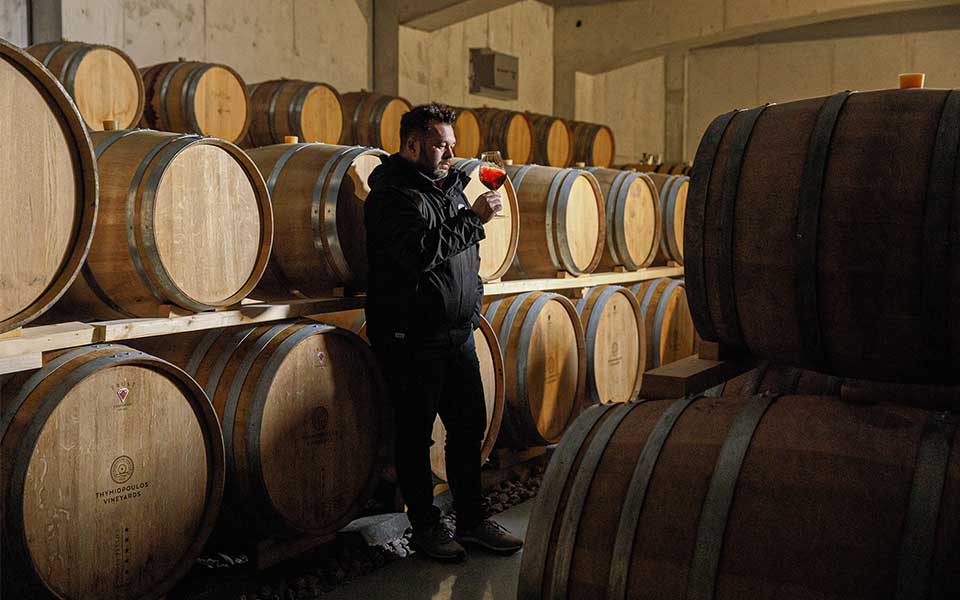
Apples everywhere
In 1950, Lanaras, the industrialist, brought two Italian agronomists and arborists, the Vigato brothers, to Naoussa. They saw in apple cultivation a way to increase agricultural production in the area. Naoussa began to produce very high-quality apples in its semi-mountainous areas. In the 1960s, only five hectares of vineyards remained in Naoussa. It was then that Ioannis Boutaris’ grandsons, Yiannis and Konstantinos Boutaris, took over the winemaking baton from their father, Stelios, and decided to invest in the enterprise by purchasing estates in Giannakochori, Imathia. Yiannis envisioned rebuilding the region’s legendary vineyard industry, a decision that marked a new beginning. Simultaneously, under the guidance of Kourakou-Dragona, who served as president of the International Organisation of Vine and Wine (OIV), Xinomavro became the predominant variety in the vineyards, a role previously played by clones of Cabernet, Mavroudi, Mavrodaphne and Vaftra.
During the same period, the first Greek Appellations of Origin of Superior Quality were recognized. Three prerequisites were set for this recognition: the zone must have a documented winemaking tradition backed by written sources; families associated with the viticultural tradition; and wines produced from grapes adapted to the environment over years and vinified within the zone using modern technology. In central Macedonia, the zones of Naoussa, Amyndeo, Goumenissa and Rapsani were recognized.
“In 1976, most of the Xinomavro vineyards in Naoussa were replanted,” winemaker Petros Karydas recalls. In 1978, the new state-of-the-art Boutari winery, which remains the heart of the company’s wine production, was inaugurated in Stenimachos, Naoussa. The winery’s tanks from this era, some with a capacity of 120 tons of wine, showcase the scale that the company achieved at this time.
It was at this central bottling facility for all the company’s wineries (a total of five) that many new labels were created, spurring on the evoultion of Greek wine as a whole. In the 1990s, the Boutari company produced one million bottles of Naoussa Xinomavro. Today, the winery’s lower basement houses a wine library, a living archive with thousands of bottles from the 1960s to the present. The oldest of these are Naoussa wines, in which the great aging potential of Xinomavro has been studied.
In the following decades, Xinomavro firmly established itself. The Tsantali winery, another major wine producer in Naoussa, came into existence, joining older, smaller businesses such as the Chrysochoou (1948) and Kastaniotis (1979) wineries. In 1983, the Vaeni Agricultural Cooperative was founded by 25 vine growers; today, it has over 250 members. Until the 1990s, most grape growers sold their produce to the largest wineries. However, the visionary Yiannis Boutaris knew that a viticultural zone could not rely on just two or three major players, and he encouraged many grape producers to become winemakers themselves. This led to the emergence of the first small wineries, such as those of Karydas, Diamantakos and Foundis. In the following years, the Boutari winery, then huge, got into some financial difficulty. The two Boutari brothers,Yiannis and Konstantinos, decided to part ways, leading to the creation of two new legal entities: the relaunched Boutari, and the Kir-Yianni estate. Today, the region boasts 23 winemakers, many of whom are under 40 years of age. More than 400 hectares, stretching from Giannakochori and Gastra, to Trilofos, Fyteia and Arkochori, are planted with grapes.
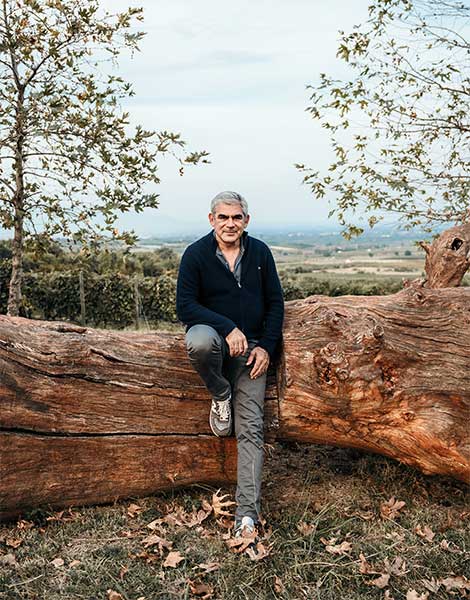
© Vicky Tsatsampa
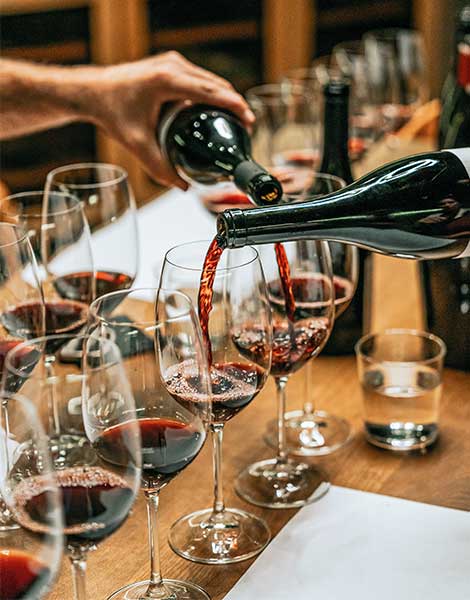
© Vicky Tsatsampa
On the rise
The last 30 years have been remarkable for Xinomavro. Young producers, educated in France, learned how to make great red wines and returned to their homeland to experiment with the variety’s potential. Meanwhile, as Xinomavro demonstrates exceptional adaptability to different types of soils with reliably good results, producers began to cultivate and vinify it in various parts of Greece. The surge in supply generated demand at a time of increasing international interest in indigenous grape varieties and in the unique terroirs of wines. It is undeniable that its popularity has led to an appreciation for quality Greek wines that goes beyond Assyrtiko. The international recognition of Xinomavro is partly due to certain producers who focused on the variety, such as Stellios Boutaris, a passionate winemaker and a prominent figure in the Greek wine industry and talented Kostis Dalamaras, as well as Apostolos Thymiopoulos, the first Greek winemaker to be awarded the title of Rising Star by the magazine Decanter in 2022, in recognition of his devotion to expressing the unique characteristics of this grape.
Alongside Santorini’s Assyrtiko variety, Naoussa’s Xinomavro, with its long presence in the region, stands as proof of Greece’s rich winemaking heritage and showcases the country’s ability to produce exceptional wines rooted in terroir and in unique varieties. Today, versions of this wine include aged, oxidative-style, natural, sulfur-free, long-aged, and blanc de noir, and wine enthusiasts and critics alike are charmed by its versatile character.
Opening a bottle of Xinomavro reveals high acidity, tannins (firm or softer, depending on the wine’s age), flavors of dark fruits, spices and, sometimes, earthy or vegetal notes. Its structure allows for aging, leading to wines with notable complexity that develop beautifully over time. Recently, in a tasting for the “Oinochoos” magazine, masters of wine and a master sommelier tasted Xinomavro from the last five decades. They observed the evolution not only of each label but also of the viticultural zone and the winemaking. They found that the tannins had softened but not vanished, the acidity had mellowed but remained present, and though the color had deepened, Xinomavro remained at its core unchanged and true to itself.

